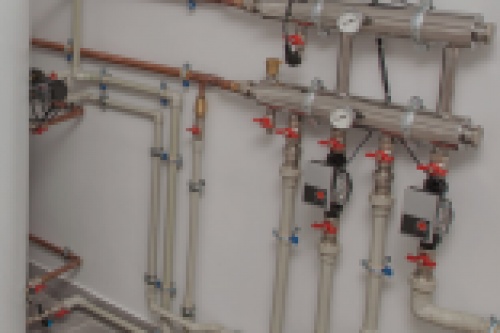Are You Wanting to showcase your great business to the world?
You have landed at the exact place where you have to be.
Here you GO!
This guide shows each and every step towards how you can build your WooCommerce store easily & fast in WooCommerce using Elementor.
The combination of these will take your business to new heights.
Using WooCommerce you will have everything under your control.
It will help you stand out by giving full access to customization that you can customize your WooCommerce store the way you want.
Don’t underestimate WordPress for building a complex and enormous eCommerce store.
There are more than five million stores currently active on WooCommerce, so you can imagine the success level of these businesses with WooCommerce Store.
In this guide, you will learn to build a WooCommerce store with Elementor, product page & cart customization, and other essential things in depth.
After going through these six steps, you will have your own WooCommerce store ready to start selling.
So, without getting delayed, let’s hop into it.
Do you really need WooCommerce Store?
There are a lot more plugins out there to start with.
But, why WooCommerce?
Let me clear your doubt.
With WooCommerce, worries don’t come your way.
To make it clear,
Leave everything on the platform, just fill up your details about your store.
You don’t have to create anything like a cart page or checkout page.
WooCommerce will take care of these. There is everything pre-built.
Not only that, but there are other factors too that clearly shows why WooCommerce is the best place to build huge stores.
The first and foremost thing is that this platform is a powerhouse of features.You are free to sell anything you like.
It offers ample theme options to choose from. Also, offers in-built payment gateways.When it comes to SEO, WordPress stands out among other platforms. Your products will do better in SERPs.
WordPress has the powerful plugin “Yoast SEO” that helps take your products to people who actually need them.
One more reason is that your whole WooCommerce store can build free of cost. Yet, there are some extensions & functionalities that don’t come free.When it comes to security, the plugin has its own API that gets regular security audits.
Managing orders is a piece of cake for WooCommerce. It offers you an easy & intuitive interface.
These are just chunks of the reasons, but there are a lot more perks of starting a WooCommerce store.
1. Install & Setup WooCommerce Plugin In WordPressNow, if you don’t know the installation process, then we are for that.
WooCommerce is nothing but just a plugin.
In order to install the plugin,
Head over to the left side of the WordPress dashboard.
NOW, go to the plugins and click “Add New”.
Done.
The plugin has been installed.
After activating the plugin, it takes you through its setup wizard which you can follow step by step.
Yet, it’s up to you, either you can skip the process and manually install it the way you want or just follow along with it.
HERE, we are illustrating the whole setup wizard process, after installing a plugin.
Enter The Required Details:The first page will ask you to fill up the basic information regarding what store you want to open.
Select Your Industry:After clicking continue,
The next screen will pop up and show you the industry options.
You have to pick your industry in which your WooCommerce store will be set up.
Product Listing:The subsequent screen will show you a bunch of categories.
You have to select what type of product you will sell.
Click continue.
Now on the next page, you have to enter the number of products that you want to display.
And, asks you some more like if you are selling elsewhere or if you want to market on Facebook.
Select according to your preference.
Choose Your Theme:At last, it will ask you to select a theme for your store.
But before choosing a theme you need to consider certain criteria in order to select the perfect theme for your WooCommerce store.
Moreover, there are some other essential configurations you need to make.
6. WooCommerce Store Setup:
The first page of the WooCommerce store setup will ask you to fill some of the basic details about your eCommerce store.
Just fill-up the details such as your store’s location by country, address, state, postal code, currency, and type of product you want to sell.
That’s All.
Configure Payment Gateway:First, set up your payment gateway before you head to the other things.
There are few options to choose from whether you want to go with PayPal, COD, or bank transfer.
Set Up Shipping:And if you are stuck somewhere then there are guides & docs related to it on WooCommerce.
We have completed pretty much here.
Also, we discussed the essential setups so If there’s something left to configure then you can set it up later.
Let’s head on to install Elementor.
2. Installation Process of ElementorThere’s nothing new in installing Elementor.
There are the same steps you have taken to install the WooCommerce plugin.
Go to the right side of the WordPress dashboard.
Click on to the plugin section and “Add new”.
Search for the Elementor and install it.
The same process applies here.
After you activate the plugging, it will take you to the quick guide and makes you comfortable with its UI and all.
So that was the process of installing Elementor.
I hope you get it.
3. Product Page Creation With WooCommerce & ElementorAs you can see, we have installed both WooCommerce & Elementor plugins.
It’s time to create the first product page with WooCommerce.
So, let’s start step by step.
Step 1: Add Product
To start create a product.
Head on to the left side of the WordPress dashboard.
Products > Add New
Select products and click on the “add new”.
The new screen will give you the intuitive look with all the access and functionalities required in adding products.
As you can see from the image, there’s nothing complicated.
It works the same as creating a post or page, entering the product name and description.
Furthermore, there are many other options too such as product category, product tags, product gallery, product image.
Isn’t it just a matter of minutes?
Let’s get to the other options.
Step 2: Setting up Product Data
The first and foremost thing you need to do is specify the kind of product you want to create.
There is a total of four options to choose from:
Simple Product,Grouped Product,External/Affiliate product,Variable Product.Next to the product data, you will find two checkboxes,
Virtual and Downloadable.
Now let me explain the use of both.
Virtual means selling software that is non-shippable and not selling physical products like books, apparel, toys, and more.















